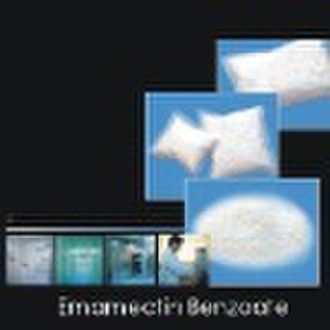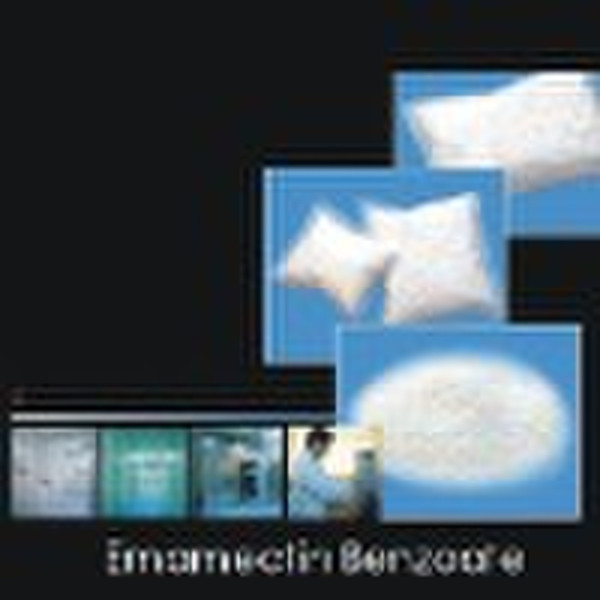Catalog
-
Catalog
- Agriculture
- Apparel
- Automobiles & Motorcycles
- Beauty & Personal Care
- Business Services
- Chemicals
- Construction & Real Estate
- Consumer Electronics
- Electrical Equipment & Supplies
- Electronic Components & Supplies
- Energy
- Environment
- Excess Inventory
- Fashion Accessories
- Food & Beverage
- Furniture
- Gifts & Crafts
- Hardware
- Health & Medical
- Home & Garden
- Home Appliances
- Lights & Lighting
- Luggage, Bags & Cases
- Machinery, Hardware & Tools
- Measurement & Analysis Instruments
- Mechanical Parts & Fabrication Services
- Minerals & Metallurgy
- Office & School Supplies
- Packaging & Printing
- Rubber & Plastics
- Security & Protection
- Service Equipment
- Shoes & Accessories
- Sports & Entertainment
- Telecommunications
- Textiles & Leather Products
- Timepieces, Jewelry, Eyewear
- Tools
- Toys & Hobbies
- Transportation
Filters
Search
Emamectin

Mountain Zhang
Contact person
Basic Information
| Classification | Biological Pesticide |
|---|---|
| CAS No. | 155569-91-8 |
| Other Names | Emamectin |
| EINECS No. | 155569-91-8 |
| Place of Origin | Henan China (Mainland) |
| Purity | 5% |
| Application | controlling insects |
| Brand Name | Keyuan |
| Model Number | 3-08092010 |
| State | Granular |
Common name: Emamectin benzoateCAS #: RN [155569-91-8]; Formerly [137512-74-4] and [179607-18-2] Development codes MK 244 (Merck)Appearance: White or light yellow crystal powder Melting point: 141-146centigrade Stability: Soluble in methanol, acetone and the like, slightly soluble in water, insoluble in hexaneSpecificateion: 60%, 80%, 90% technical grade(active ingredient ).Brief Introduction: The product is a semi-fermented and semi-synthesized insecticide of Avermectin kind. The intermediate emamectin is synthesized under certain conditions using AVM as material, then reacted with benzoic acid, and thus we get Emamectin Benzoate. Emamectin Benzoate is more effective than Emamectin against the insects Lepidoptera. Notably, it is the best insecticide against cotton bell worm (Helicoverpa armigera), cole miller (plutella xylostella Linnaeus), etc. Which have been tolerant with such insecticides as pyrethroids, organic phosphates. So, emamectin benzoate is an ideal substitute for high poisonous and high residual agricultural chemicals, also a kind of outstanding biological pesticide, which prevents and controls tolerantly harmful insects. Many agricultural chemicals factory use it as ideal technical for formulating and single medicament exploiting. Mechanism of action: Cause death by hindering motor nerve information transmission of harmful insect. It strengthens the affect of nerve matter, such as glutamic acid and the r - amino-butyric acid (GABA), thus causes massive chloride ions enter into the nerve cell, causes losing of cell function and disruption of nerve conduction, larvae stop eating food immediately after exposure to emamectin benzoate, lead to irreversible paralysis and die. It can be degraded in the earth quickly and not accumulated. It's safe for environment. Absorbed by crops easily, and seep to epidermis, causes extension of validity.Main preventing and controlling insects: Mainly used to prevent and control harmful insects in Lepidoptera, Coleoptera, Homoptera, Mite. Widely used to prevent and control bollworm, cutworm of sugar beet, cole moth, cabbage caterpillar, armyworm, Mite, Prodenia litura(Fabricius) and so on harmful insects in many kinds of vegetables, fruit trees, tea, tobacco and cottonFunction character: This product is high effective, low poisonous and environment safety, it's a new kind of half synthesis antibiotic pesticide, has the function of stomach poison and contact insecticide. Effect of preventing and controlling under extremely low density also is obvious. It is secure for beneficial insect, person and livestock in conventional dosage. It has already been used widely in western nation. In home, it also applies widely to tobacco, tea and vegetables. It may formulate with majority of agricultural chemicals, it's one kind of green agricultural chemicals.Toxicity: Mammalian Toxicology Oral Acute oral LD50 for rats 76-89 mg/kg. Skin and eye Acute dermal LD50 for rabbits >2000 mg/kg. It is not irritant to skin, and has no sensitising potential. Inhalation LC50 (4 h) for rats 2.12-4.44 mg/m3. NOEL (1 y) for dogs 0.25 mg/kg b. W. ADI 0.0025 mg/kg. Other Not tumorigenic. Toxicity class WHO (a. I. ) II Ecotoxicology Birds Acute oral LD50 for mallard ducks 46, bobwhite quail 264 mg/kg. Dietary LC50 (8 d) for mallard ducks 570, bobwhite quail 1318 ppm. Fish LC50 (96 h) for rainbow trout 174, sheepshead minnow 1430? G/l. Daphnia LC50 0.99? G/l. Algae >94? G/l. Bees Toxic to bees. Worms >1000 mg/kg.Cuations: : High toxic to aquatic livings such as fish. Also high toxic to bees. No mixing with alkaline substances. Rapidly degrade in light. Sealed tightly and stored away from light in a cool and dry place.
Delivery terms and packaging
Packaging Detail: suitable export packing of 25 kg fiber drum with P.E. inner bags. Delivery Detail: 30-45 days
Payment term
Letter of credit
Telegraphic transfer
-
Payment Methods
We accept:









